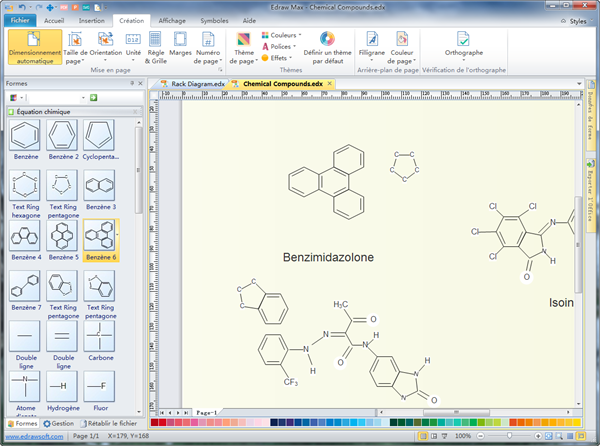

- Chemical equation maker how to#
- Chemical equation maker pdf#
- Chemical equation maker series#
- Chemical equation maker free#
This means looking for stoichiometric coefficients for the reactants and products. So, the first step in stoichiometry calculations is balancing chemical equations. Knowing the molecular weight of the compounds involved in the reaction, it is easy to find the mass of these compounds in grams. For any balanced chemical equation, whole numbers (stoichiometric coefficients) are used to show the amounts (in moles) of both the reactants and products. Stoichiometry is the field of chemistry that studies the relative amounts of reactants and products in chemical reactions. You can enter either the required number of moles or weight in grams for one of the compounds in the corresponding field, and then press the ‘Enter’ key, to compute new values for the rest of the compounds.

The reaction stoichiometry is calculated automatically for a balanced equation, with the number of moles for the compounds being the same as the stoichiometric coefficients. In what follows is a more detailed syntax guide to our calculator.
Chemical equation maker pdf#
You can enter a chemical equation manually or paste the equation copied from a web page or text document (including DOC or PDF file). In case the original equation was unbalanced, the field with this equation is highlighted in light pink.
Chemical equation maker free#
The equations may include free electrons and electrically charged molecules (ions) as well as hydrated compounds. You can also use our empirical formula calculator.This online Stoichiometry Calculator finds the stoichiometric coefficients to balance a given chemical equation and computes amounts of the reactants and products of the reaction, both in moles and grams. The resulting molecular formula is C2H4O2. Next, Divide the molar mass of the substance by the molar mass of the empirical formula:įinally, multiply the number of atoms of each element in the empirical formula by this ratio. Find the molecular formula of a compound whose empirical formula is CH2O and molar mass is 60 g/mole.įirst, calculate the molar mass of the empirical formula:ġ(12 g/mole C) + 2(1 g/mole H) + 1(16 g/mole O) = 30 g/mole CH2O Once you have the empirical formula, you an find the molecular formula if the molar mass of the substance is known.
Chemical equation maker how to#
How to find Molecular Formula from the Empirical Formula The resulting SIMPLEST WHOLE NUMBER empirical formula: C2H4O Find the empirical formula for this compound knowing that H = 1 g/mole, O = 16 g/mole and C = 12 g/mole.įirst, convert the grams of each element to moles by dividing by their molar mass:

A compound is composed of 5.045g of carbon, 0.847g of hydrogen, and 3.36g of oxygen. We can determine the empirical formula by using mass of each element in the compound data. How to find the Empirical Formula From Element Mass If one of the numbers was (say) 1.5, we have to multiply all the mole figures by 2. NOTE: In this case all mole figures represent whole numbers, so we can say that this is the SIMPLEST WHOLE NUMBER formula. The resulting SIMPLEST WHOLE NUMBER empirical formula: CH2O Then convert the grams of each element to moles by dividing by their molar mass:ĭivide each of the three mole figures by the lowest of the three in order to simplify the mole ratio. Find the empirical formula for this compound knowing that H = 1 g/mole, O = 16 g/mole and C = 12 g/mole. A compound is composed of 40% carbon, 6.67% hydrogen, and 53.3% oxygen. We can determine the empirical formula by using the proportion of each element in the compound data. How to calculate the Empirical Formula from Element Proportions
Chemical equation maker series#
It is the simplest whole number non-reducible ratio formula for a molecular formula or compound.Ī molecular formula is a formula indicating the supposed molecular constitution of a compound, commonly consisting of a series of letters and numbers comprising the atomic symbols of each element present in a compound followed by the number of atoms of that element present in one molecule of the substance. An empirical formula is a chemical formula showing the ratio of elements in a compound rather than the total number of atoms.


 0 kommentar(er)
0 kommentar(er)
